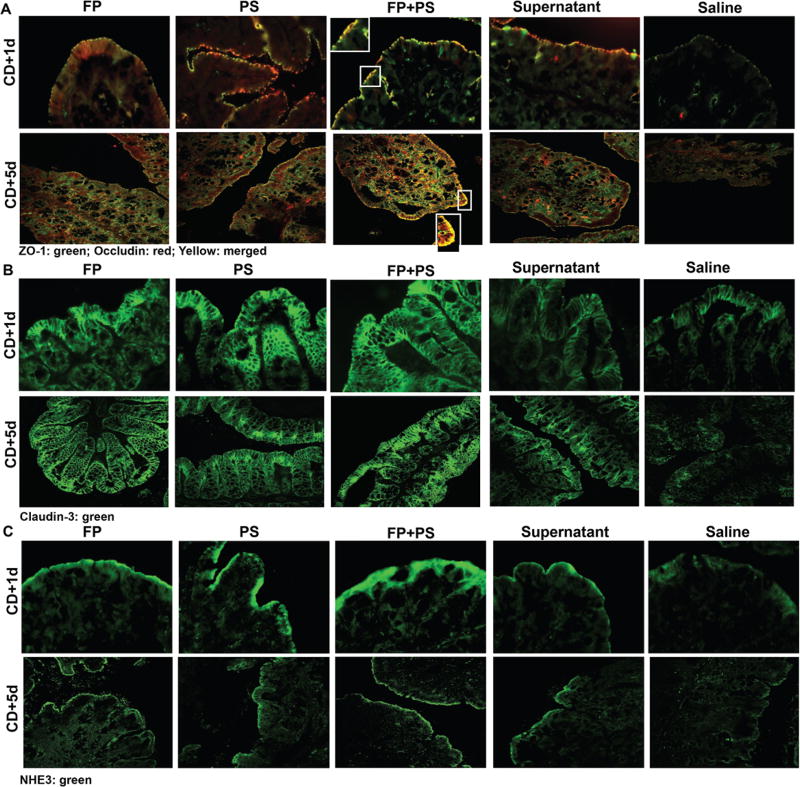Figure 4.
Effects of Clostridium difficile (CD) on tight junction protein and an anion exchanger expression in proximal colon. Mice were treated as described in Figures 1 and 2. Proximal colon was collected and embedded in optimal cutting temperature medium (OCT) for histology on days 1 and 5 after CD exposure. (A) Occludin (red), zona occludin-1 (ZO-1; green), (B) claudin-3 (green), and (C) Na+/H+ exchanger isoform 3 (NHE3; green) were visualized by immunohistochemistry in sections of proximal colon frozen in OCT. A selected area was cropped and enlarged. All images were acquired using a 40 × objective. Images are representative of at least replicate images captured per mouse in 3–6 mice per treatment group. FP, Faecalibacterium prausnitzii; PS, potato starch.

